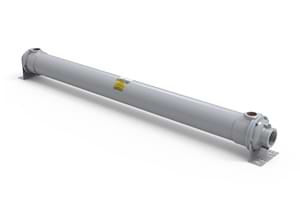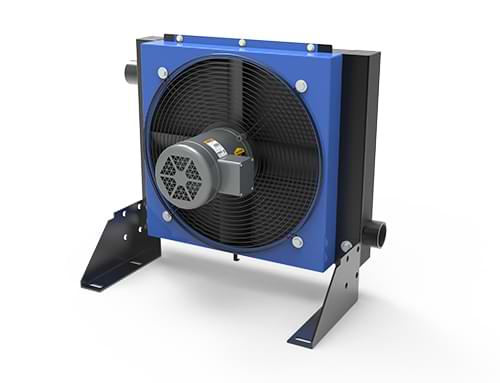Manufacturing Aftercoolers
These devices are designed to cool air after it has been compressed, removing excess heat and moisture generated during the compression process. This is essential because hot, moist air can damage equipment, reduce product quality, and compromise operational reliability. By cooling the air and condensing water vapor, aftercoolers ensure that downstream tools, machinery, and processes function optimally.
Applications
- Automotive: Compressed air aftercoolers ensure dry, cool air for precision painting, preventing moisture-induced defects and enhancing finish quality, while extending equipment life and reducing maintenance costs.
- Electronics assembly uses compressed air aftercoolers to provide moisture-free air for sensitive component handling, preventing corrosion, ensuring reliable soldering, and enhancing product quality in high-precision production lines.
- Metal Fabrication: Compressed air aftercoolers deliver cool, dry air for plasma cutting and welding, enhancing precision, reducing material warping, and extending tool life, ensuring high-quality, efficient production processes.
Water Cooled Aftercoolers
Compressor Cooling
- Fixed or Removable Tube Bundles
- Material Options Available
- Standard and Custom Options

Air Cooled Aftercoolers
Compressor Cooling
- Use Ambient Air to Cool
- Variety of Motor Options
- Standard Pressures of Up To 250 psi

The Importance of Aftercoolers for Manufacturing
In manufacturing, compressed air is widely used for powering pneumatic tools, operating machinery, and facilitating processes like painting, packaging, and material handling. Without aftercoolers, the heat from compression—often exceeding 200°F (93°C)—can cause thermal stress on components, leading to premature wear or failure. Additionally, moisture in the air can corrode pipes and tools or contaminate products, such as in food and pharmaceutical production where hygiene is paramount. For example, in automotive assembly lines, aftercoolers ensure that air-powered wrenches and spray guns operate smoothly without water-induced malfunctions. Similarly, in electronics manufacturing, dry air prevents short circuits or damage to sensitive components during air-blowing processes.
Aftercoolers come in various types, typically categorized by their heat exchanger designs: air-cooled and water-cooled. Air-cooled aftercoolers use ambient air and fans to dissipate heat, making them cost-effective and suitable for general applications like small workshops or metal fabrication plants. They often employ finned-tube heat exchangers, where hot compressed air flows through tubes while cooler ambient air passes over fins to absorb heat. Water-cooled aftercoolers, on the other hand, use a liquid coolant in a shell-and-tube heat exchanger, where compressed air flows through tubes surrounded by water in a shell. These are ideal for high-capacity systems or environments with limited ventilation, such as large-scale chemical plants or refineries. Plate heat exchangers, another variant, use stacked plates to transfer heat efficiently and are compact, making them popular in space-constrained facilities.
By reducing air temperature and moisture, aftercoolers improve energy efficiency, as downstream dryers and filters require less effort to condition the air. This translates to lower operational costs and a reduced environmental footprint. Whether in textile production, where dry air prevents fabric staining, or in bottling plants, where consistent pressure is vital, aftercoolers are indispensable for maintaining manufacturing precision and reliability.


